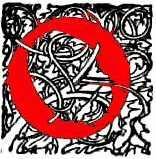
ne line . . . ran right through Victorian society, the line which divided those who were respectable from those who were not. It is very unfortunate that the whole subject of Victorian respectability, particularly of Victorian prudery, has been considered more as the subject for satire, or humour, or indignation, rather than as a matter for serious historical analysis. It seems probable that the development should be considered as a chapter in a history that clearly goes back in time long before the Victorian epoch or the nineteenth century and is essentially part of the history of the battle for refinement and civilization, and above all the better protection of women, against the promiscuity, animalism, brutality and grossness which had been common even in the eighteenth century. Unfortunately it seems that this battle wherever it is fought seems normally to cause the development of an etiquette which becomes in many points otiose and extremely cumbersome, the encouragement of taboos which are at best ridiculous, and the imposition of a code which can be extremely cruel; it can lead to the overweighting of morality at certain points and the miserable distortion of religion. But when these things are to be judged it is only fair to remember also the circumstances in which they developed and the evils which they were intended to control, evils for the continuance of which into the nineteenth century there is adequate evidence in what might happen in Victorian streets, and in railway trains and elsewhere. [126-27]
Related Materials
- Social class
- The Victorian Gentleman
- Newman on the Gentleman
- The Political Function of the Gentleman
- Punch on the use of “Gentleman”
Bibliography
Clark, G. Kitson. The Making of Victorian England Being the Ford Lectures Delivered before the University of Oxford. New York: Atheneum, 1971.

Last modified 28 May 2018